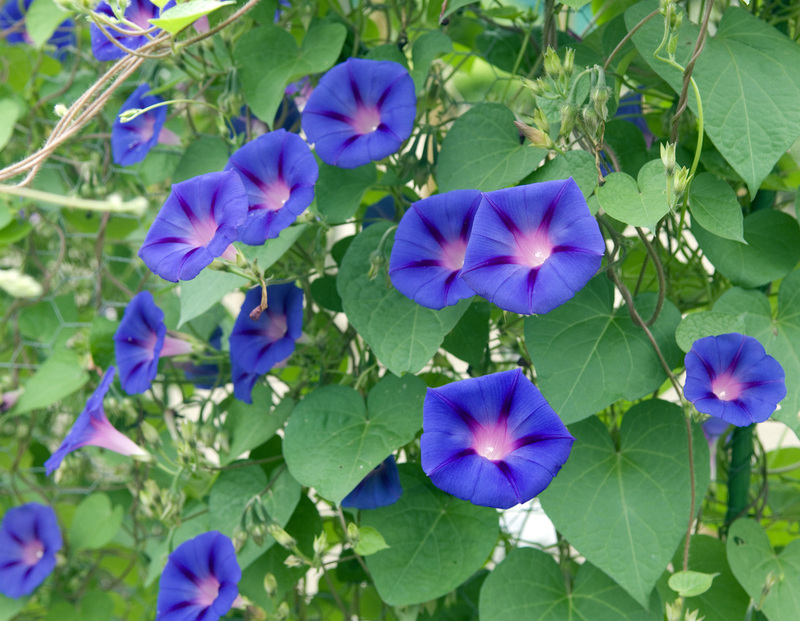Hedge Trimming Inspirations: Shapes and Creative Methods
Posted on 12/06/2025
Hedge Trimming Inspirations: Shapes and Creative Methods
Hedge trimming is more than just a gardening necessity; it's an art form that can transform your outdoor spaces into delightful, imaginative havens. From sculptural topiary art to practical privacy screens, the possibilities are endless when you explore creative hedge trimming shapes and innovative methods.

Why Hedge Trimming Matters: Beyond Maintenance
Meticulously groomed hedges serve as the backbone of many beautiful gardens. Hedge shaping enhances not only the visual appeal but also the health, structure, and longevity of shrubs and bushes. Well-trimmed hedges can:
- Define garden rooms and spaces
- Create stunning focal points
- Provide shelter and privacy
- Encourage new growth and dense foliage
- Deter pests and diseases
- Boost property curb appeal
Incorporating inspired shapes and creative trimming methods adds a distinctive character that elevates your landscape from ordinary to extraordinary.
Popular Hedge Trimming Shapes: From Classic to Contemporary
Whether you're inspired by formal gardens or modern landscaping, choosing the right shape for your hedge unlocks endless creative potential. Here are some popular and attention-grabbing hedge design ideas:
1. Classic Geometric Shapes
- Rectangular (Formal) - Timeless and elegant, perfect for borders and property lines
- Square - Offers crisp lines and a sharp, classic look
- Round & Spherical - Adds softness and subtle structure to the garden
- Pyramidal - Imparts a formal, stately effect
*Tip: Symmetry and clean edges are key for geometric hedges. Use string and stakes for guidance!
2. Topiary Art: Living Sculptures
- Animal Figures - From peacocks to elephants, bring whimsy and life to your yard
- Spirals and Cones - Dynamic and elegant, ideal for entrances and pathways
- Tiered Layers - Create drama and sophistication by stacking spheres or other shapes
- Abstract and Fantasy - Let your imagination run wild with unique designs and patterns
Topiary hedging requires patience, planning, and regular maintenance, but the results are dazzling and unique.
3. Naturalistic and Flowing Forms
- Waves and Curves - Inspired by nature, perfect for informal gardens
- Cloud Pruning (Niwaki) - Japanese art of shaping shrubs into cloud-like formations
- Hedge Mazes - Add intrigue and fun to larger gardens
- Blended Boundaries - Allow hedges to merge gently with other plants for a soft, organic look
*These approaches bring movement and a sense of artistry using less rigid trimming techniques.
Creative Hedge Trimming Methods and Techniques
Choosing the right hedge pruning technique can profoundly impact the look and health of your landscape plants. Here's a comprehensive guide to innovative hedge shaping methods for gardeners of all levels.
1. Patterned Trimming
- Chevron - Alternating V-shapes for contemporary flair
- Interlocking Diamonds - Stunning, intricate lattices
- Lettering and Initials - Personalize your garden with names or messages
- Wave Patterns - Gentle, repetitive curves create visual harmony
Use marking chalk or rope to sketch patterns before cutting for precision.
2. Layered Trimming
- Step Trimming - Graduated tiers for depth and dimension
- Vertical Layering - Different shrubs trimmed at various heights for a living tapestry
Layered hedges are ideal along slopes, accentuating changes in elevation while adding texture.
3. Negative Space Techniques
- Cut-Outs - Remove sections to create holes, windows, or geometric shapes
- Tunnels and Arches - Train hedges over pathways for a magical entrance
- Form Frames - Use wire or wooden forms as guides for eye-catching negative spaces
These innovative strategies open up new vistas in your garden and offer playful light and shadow interplay.
4. Seasonal Creative Trims
- Themed Trimming - Hearts for Valentine's, stars for festive periods
- Edible Topiary - Try herbs such as rosemary or lavender for fragrant sculpted shapes
How to Achieve Stunning Hedge Shapes: Step-by-Step Guide
For the ultimate hedge trimming inspiration, follow these professional tips to sculpt your bushes into living masterpieces:
- Choose the Right Hedge Plants
Not all plants are equally suited for creative shaping. Popular options include:- Buxus sempervirens (Boxwood) - Classic for tight shapes and topiary
- Taxus baccata (Yew) - Flexible and dense growth, ideal for intricate designs
- Ligustrum (Privet) - Fast-growing and easy to shape
- Thuja (Arborvitae) - Great for tall geometric screens
- Escallonia, Photinia, Holly - Offer colorful leaves or berries
- Plan Your Design
Sketch your ideal hedge shape or use string to outline geometric forms. For complex topiary, removable wire frames can guide your trimming. - Use the Right Tools
Invest in sharp, clean shears, hedge trimmers, and loppers. For detailed work, handheld pruners and topiary shears are indispensable. - Start Softly and Refine Routinely
Gently shape young, pliable shoots. Refine the design a little at a time, trimming often to promote bushy, dense growth. - Maintain Shape through the Seasons
Most hedges benefit from light trims in spring and summer. For tight geometric shapes, regular monthly clipping may be needed during the growing season. - Feed, Water, and Protect
Keep hedges healthy with mulch, slow-release fertilizer, and adequate water. Watch out for signs of disease or pests and treat promptly to ensure lush growth for continued creative shaping.
Best Hedges for Shape and Artistic Trimming
Careful plant selection is crucial for achieving crisp shapes and robust growth. Here are a few fan favorites for creative hedge trimming:
- Boxwood (Buxus) - The quintessential plant for topiary lovers
- Yew (Taxus baccata) - Easily clipped into both simple and complex structures
- Privet (Ligustrum) - Fast-growing, fills in quickly for privacy screens and patterns
- Hornbeam (Carpinus betulus) - Resilient, tolerates repeated cutting
- Lonicera nitida - Dense foliage, great for formal lines or soft, cloud-like forms
- Thuja and Cypress - Perfect for tall cones, spirals, and architectural shapes
Tip: Always consider your local climate, soil, and sunlight when choosing hedge plants to ensure healthy, long-lived specimens for creative pruning.
Modern Inspirations: Trends in Creative Hedge Trimming
Garden design is constantly evolving. Here are some inspired ideas currently trending in the world of hedge shaping and creative hedge trimming:
- Sculptural Minimalism: Less is more. Modern gardens often feature single, bold shapes as sculptural statements rather than intricate designs.
- Wild-Edge Hedges: Blending formal and informal, these hedges maintain shape at the core but allow sides or tops to grow naturally for a relaxed look.
- Mixed Height Border Edges: Staggering the height of segments creates movement and natural flow.
- Pollinator-Friendly Hedges: Selecting flowering shrubs and shaping them loosely encourages bees and butterflies while adding seasonal variety.
Common Mistakes to Avoid in Hedge Trimming
While artistic hedge shaping is rewarding, gardeners should take care to avoid these common pitfalls:
- Over-pruning: Cutting too much can stress plants and leave bare patches.
- Wrong timing: Pruning at the wrong time of year can harm flowering or fruiting hedges.
- Inefficient tools: Dull blades leave ragged branches more susceptible to disease.
- Poor shaping technique: Uneven cuts or improper angles can ruin the symmetry of geometric shapes.
- Ignoring pest and disease issues: Unhealthy plants won't maintain their trimmed design for long.
Expert Tips for Next-Level Hedge Artistry
- Mark it out: Use stakes, strings, or washable chalk to define the outline before trimming.
- Step back often: Regularly check from a distance for balance and symmetry.
- Practice patience: Complex forms may take years to fully develop – but the results will be well worth the wait.
- Blend with hardscaping: Integrate hedge art with arbors, trellises, or fencing for extra impact.
- Consult professionals for large projects: Ambitious hedge mazes or multi-story shapes may require expert help.

Frequently Asked Questions About Hedge Trimming and Shaping
How often should creative hedges be trimmed?
Generally, hedges should be trimmed two to three times a year, but detailed topiaries may need monthly attention during the growing season.
What's the easiest shape for beginners?
Simple geometric forms--like squares, rectangles, or soft domes--are perfect for those new to creative hedge trimming.
Can you shape flowering shrubs?
Yes! Many flowering shrubs, such as escallonia or photinia, can be gently shaped. However, avoid heavy pruning in spring if you want to preserve this season's blooms.
Conclusion: Let Your Garden Tell a Story
Hedge trimming is no longer just about neat boundaries--it's a medium for creative expression, sustainability, and living art. From timeless classics to inventive modern shapes, there are unlimited ways to personalize your landscape. Let these hedge trimming inspirations set your imagination free and transform your garden into a space that reflects your personality, passion, and creativity.
Dare to dream, trim with intention, and let your hedge shaping journey begin!
```


